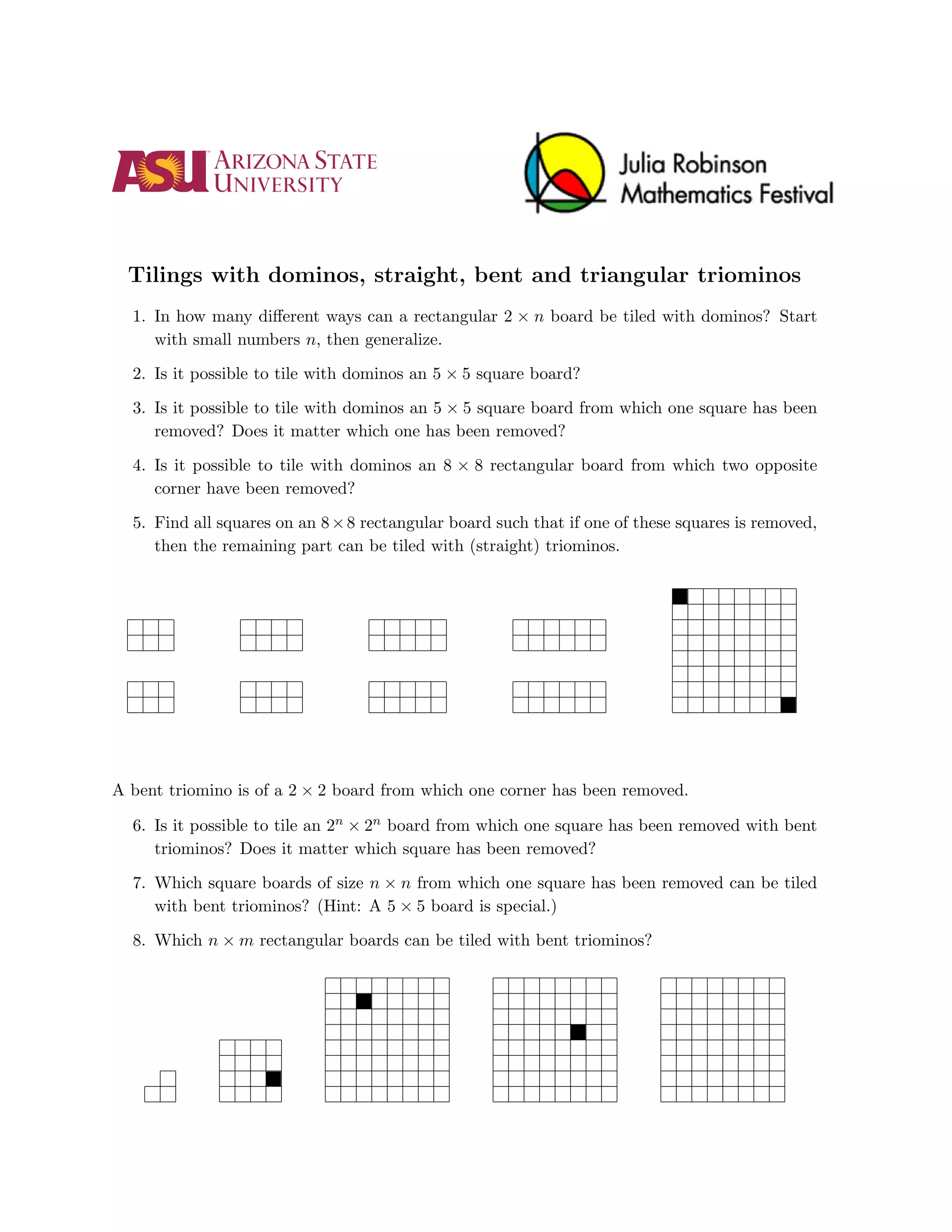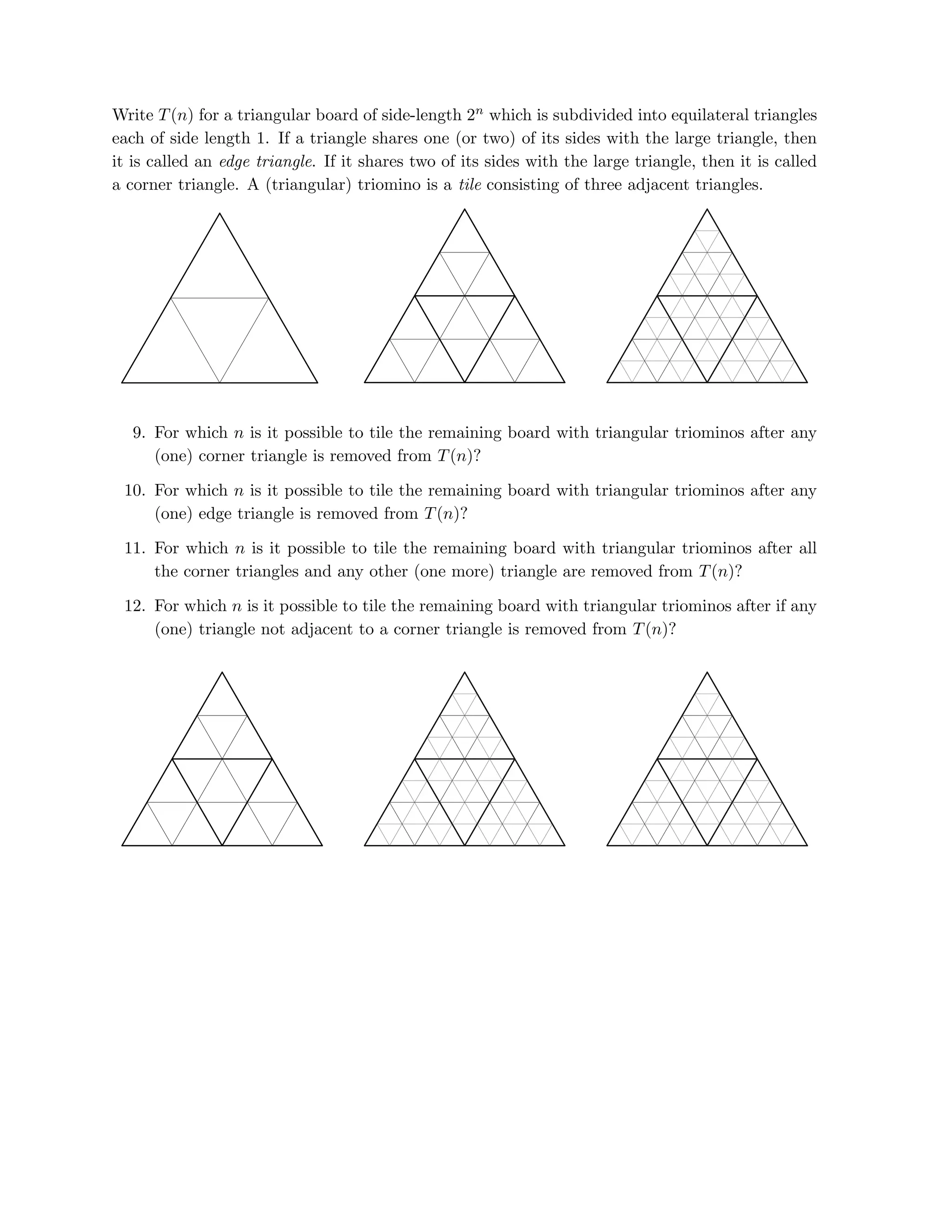This document provides a series of tiling problems involving dominos, triominos, and triangular boards. It explores tilings when squares or triangles are removed from rectangular or triangular boards, and whether certain shapes can always be tiled regardless of which space is removed. Inductive reasoning and considering patterns and symmetries are encouraged to solve the problems. The target audience is elementary school students through college, using physical tiles or drawings. The goal is to have fun exploring mathematics through these tactile problems.



